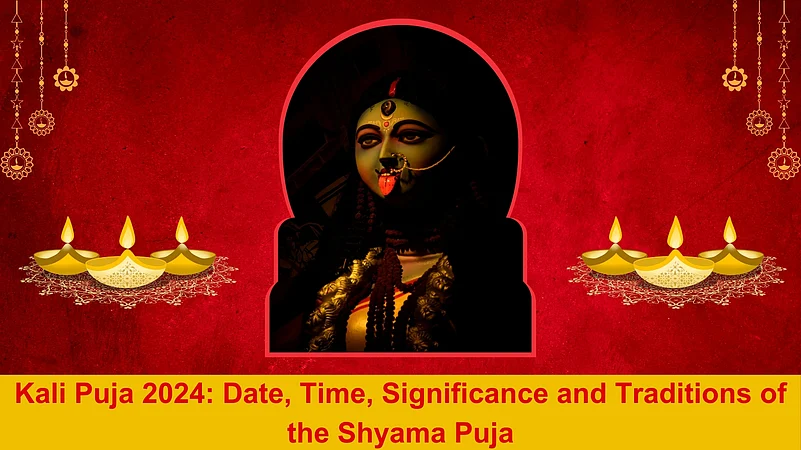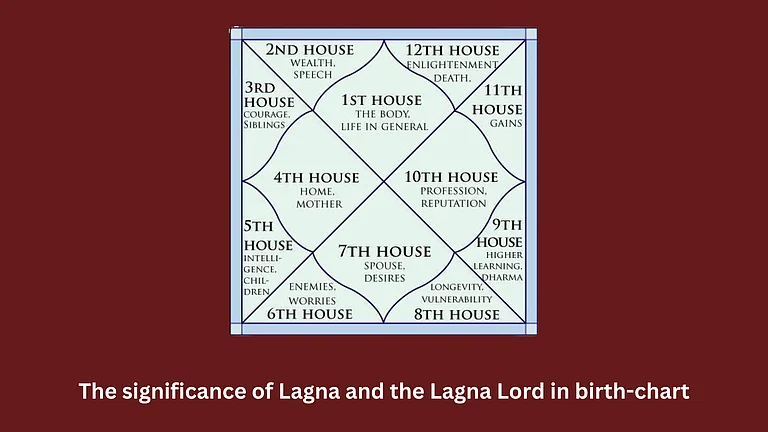Kali Puja stands as a significant Hindu festival, honouring the Avatar of Goddess Durga in her formidable manifestation as Maa Kali. People perform the puja to protect themselves from bad effects that could hurt their spiritual and mental health. It also helps with the worries that sometimes bother our minds. A very old story says that Kali Maa came out of the eyebrow of Goddess Durga. Many people know Kali as Kal Bhoi Nashini, the goddess who destroys evil. The veneration of Kali Maa takes place during the Nishitha period (night) on the Amavasya (new moon) of the Kartika month (November-December). Kali Puja is celebrated with remarkable fervour, particularly in the eastern part of the nation, such as in the state of West Bengal. The festivities encompass the illumination of residences and temples with earthen lamps, symbolising the eradication of darkness.
Kali Puja 2024 Date and Time:
Kali Puja, also known as Shyama Puja, is a major Hindu festival dedicated to the fierce goddess Kali, who symbolises the destruction of evil and the protection of devotees. In 2024, Kali Puja will be celebrated on Thursday, October 31.
According to the Panchang, the Amavasya date of Kartik month will begin on October 31, 2024, at 3:52 pm. The Amavasya tithi of this Kartik month ends at 6:16 pm on November 1, 2024. Since it is customary to worship Maa Kali during Nishita Kaal, we will not be following the practice of Udaya Tithi and instead will consider October 31, 2024, to be the date of devotion.
Date: 31st October 2024
Time: 11.39 p.m to 12.28 a.m
Amavasya Tithi: starts from 3:52 p.m. of 31st October
Best time for Kalipuja: Midnight
Significance of Kali Puja:
Kali Puja holds immense religious importance, especially in West Bengal, Assam, Odisha, and parts of eastern India. People celebrate the holiday to honor Goddess Kali, who is a fierce form of the mother goddess Durga. Kali is often shown standing on top of Lord Shiva with her tongue out and carrying weapons and the heads of demons that have been cut off. This stands as her triumph over ego and gloom.
People who worship Kali believe that she gets rid of negativity, ignorance, and bad forces, which protects her followers and gives them the strength to deal with life's challenges. She destroys demons and showers her devotees with love and care, earning her the image of a nurturing mother figure. Her ferocity represents the force needed to obliterate the chaos and adharma (unrighteousness) in the world.
Kali Puja coincides with the festival of Diwali in most parts of India, but instead of focusing on the worship of Lakshmi, the goddess of wealth, devotees in Bengal and surrounding regions devote this night to Goddess Kali. Kali Puja generally celebrates the destruction of darkness itself, while Diwali celebrates the victory of light over darkness. Both signify the same thought.
Traditions of Kali Puja:
Kali Puja traditions differ slightly across regions, but the following rituals and practices are commonly observed:
1. Idol worship and offerings:
Elaborate statues of Goddess Kali are created and adorned with flowers, red hibiscus (it is her favourite flower), and traditional ornaments. Maa Kali's idols are worshipped during the Nishita Kaal, symbolising the midnight hour, which is believed to be the most potent time for Kali's blessings. All the devotees offer bhog, which usually consists of rice, lentils, sweets, fruits, and even meat and fish, but mostly depends on local customs. Sometimes there is a ritual of offering alcohol to appease the fierce goddess. In this way, people show their gestures towards Kali maa.
2. Chanting and Meditation:
To get the goddess's blessings, devotees chant mantras like the powerful Kali Chalisa and read holy texts like Durga Saptashati. They meditate on her form and power, asking for spiritual protection and the removal of all obstacles in their lives.
3. Lighting of Lamps:
During Kali Puja, lamps and diyas are lit around homes and shrines to drive away darkness, just like they are during Diwali. It is not like Lakshmi's calm light. In Kali's worship, this light signifies the destruction to bring about rebirth and change. At the time of lighting the diyas, establish the thought of overcoming ignorance and beginning spiritual awareness.
4. Animal sacrifice:
Though declining, the practice of animal sacrifice (typically goats or buffaloes) still exists in some regions. This ancient ritual is believed to appease Kali's fierce nature. It is also very popular for symbolic offerings like pumpkins or coconuts in place of live animals.
5. Tantric Rituals:
In some Hindu groups, Kali Puja is connected to Tantric ceremonies, in which participants engage in complex rites and concentrate intensely on asking the goddess to bless them. Tantric practitioners, or people who do esoteric routines, think that this night is perfect for spiritual growth, occult practices, and mystical experiences.
6. Immersion of the Idol:
Like Durga Puja, the festival culminates with the Visarjan or immersion of Kali idols in rivers or other water bodies. This symbolises the goddess's return to her cosmic abode after blessing her devotees. Processions are held with music and dance, celebrating the goddess's power and benevolence.
Kali Puja Beyond India:
The Bengali diaspora and other Hindu communities around the world also celebrate Kali Puja. This is particularly significant in Bangladesh, the UK, and the USA, where big parties and cultural events are held to honour the holiday.
The Bengali diaspora and other Hindu communities worldwide also celebrate Kali Puja. This is particularly significant in Bangladesh, the UK, and the USA, where big parties and cultural events are held to honour the festival.



















